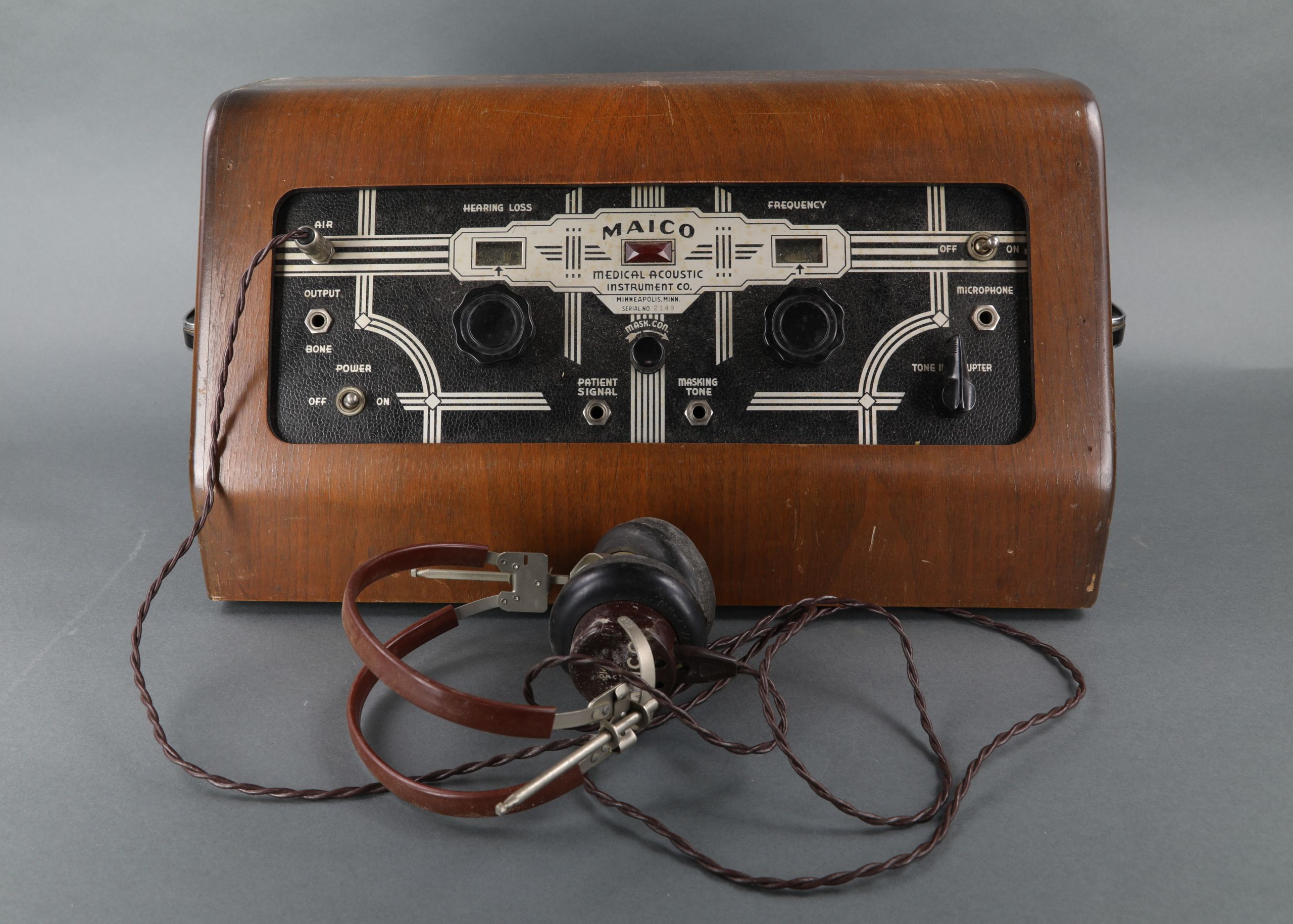May 7, 2019
 For a short time, one Hennepin County company was the nation’s leading innovator in the field of audiological diagnostic instruments and hearing aids. The device seen here from Hennepin History Museum’s collection is a Maico audiometer that dates to 1940. This device was renowned for being the first of its kind to precisely measure an individual’s hearing, making it possible to accurately diagnose hearing loss.
For a short time, one Hennepin County company was the nation’s leading innovator in the field of audiological diagnostic instruments and hearing aids. The device seen here from Hennepin History Museum’s collection is a Maico audiometer that dates to 1940. This device was renowned for being the first of its kind to precisely measure an individual’s hearing, making it possible to accurately diagnose hearing loss.
The Medical Acoustic Instrument Company was founded in Minneapolis in 1937 by Leland A. Watson, and shortly thereafter its name was shortened to the Maico. Watson had graduated from the University of Minnesota, and then became a Rhodes scholar at Oxford University. At Oxford, Watson studied with engineers that were developing new hearing aid technology and equipment. When Watson returned to Minnesota, he brought with him this innovative technology and founded his company. His expertise in the field led to the development of the Maico audiometer. Just a few years after the formation of the company, ninety percent of the audiometers in the country were made by Maico. It was used by audiologists in hospitals, clinics, and universities nationwide, as well as the U.S. Army and Navy, and even some foreign governments.
Since Watson’s time, his company has been acquired and is currently operated by an overseas hearing healthcare company. Today, many audiological diagnostic instruments still bear the name Maico, which is a testament to the innovative developments in the field that were started by Watson and his company.
Written by Alyssa Thiede
Sources:
“America’s Ears Tested on Minneapolis Instruments,” Minneapolis Tribune, April 14, 1941. Star Tribune Archive.
“Maico Used at Purdue University,” Minneapolis Star, July 5, 1941. Star Tribune Archive.
“The Mayor at Maico,” Minneapolis Star, May 12, 1941. Star Tribune Archive.
This publication was made possible in part by the people of Minnesota through a grant funded by an appropriation to the Minnesota Historical Society from the Minnesota Arts and Cultural Heritage Fund. Any views, findings, opinions, conclusions or recommendations expressed in this publication are those of the authors and do not necessarily represent those of the State of Minnesota, the Minnesota Historical Society, or the Minnesota Historic Resources Advisory Committee.

